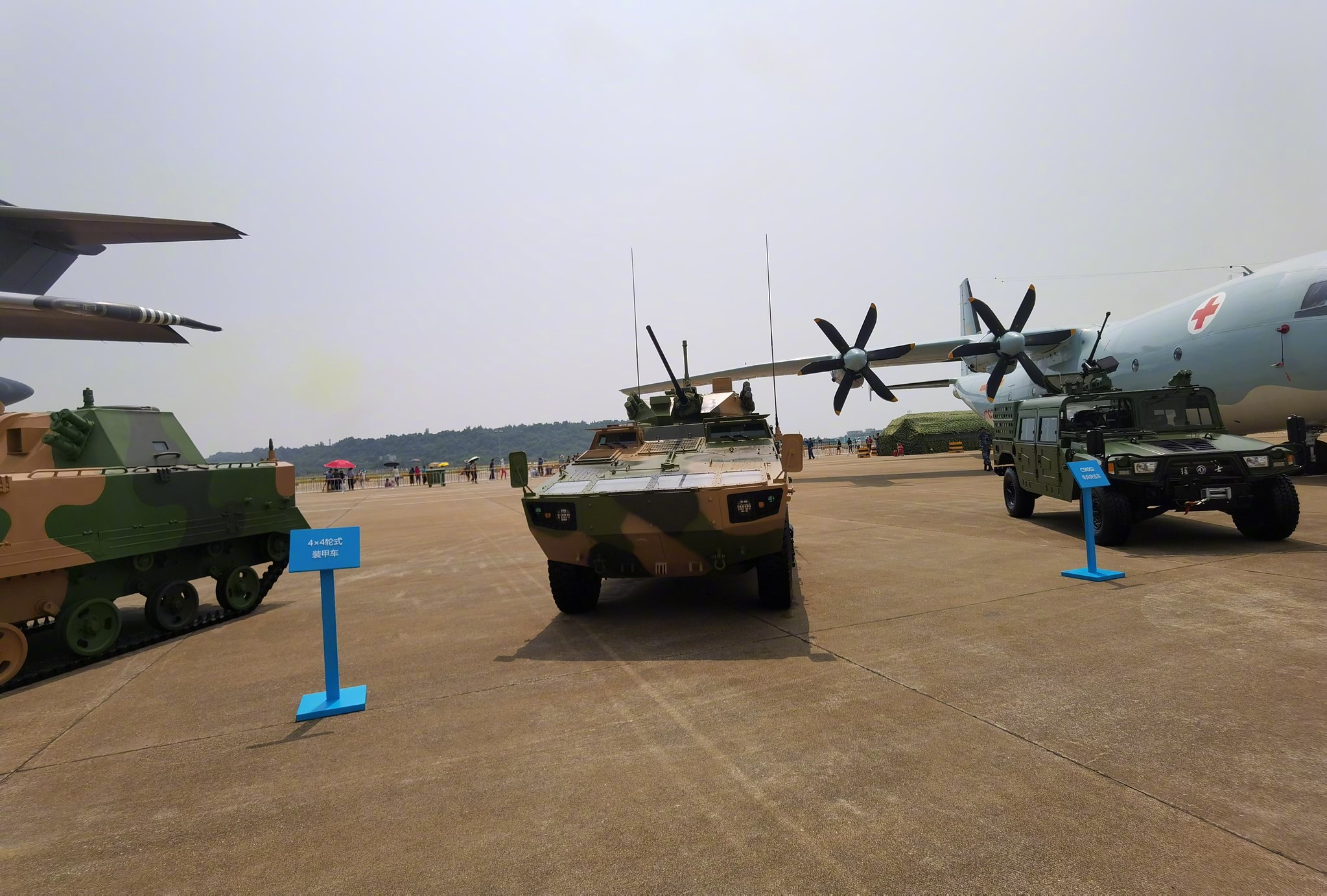You are using an out of date browser. It may not display this or other websites correctly.
You should upgrade or use an alternative browser.
You should upgrade or use an alternative browser.
Zhuhai Air Show 2020
- Thread starter Deino
- Start date
It is true that the wing type was meant to provide enough lift without huge wing span, therefor higher altitude. But I don't think it is compromise for "weaker" engine. A J-7 engine is (more than) powerful enough to push UAV of this size.WZ-7 was limited by its engine (old J-7 turbojet) so its weird wing design was a compromised solution in order to achieve the very high altitude target. The wings look very scifi but if you think about it it's basically a biplane, and they need to be like that to squeeze as much lift out of them as possible for available engine power.
CH-7 has the simple wing perhaps because it does not need that huge wing span like WZ-7.Shiliao said CH-7 is in the same role as WZ-7, only with technology having improved to such a degree that no compromise is required to achieve its goals any more.
The key is perhaps the speed, with a higher speed, smaller wing area can generate equal amount of lift. I suspect that WZ-7 and CH-7 have different speeds? It is different mission types determine the power-plants and wing shapes, rather than "weaker" engine determines wing shapes.
A J-7 engine may not be able to generate enough thrust at high altitude to sustain the necessary lift. A lot of actual thrust depends on the specific flight envelope the engine is operating in, and older generations of engines probably have narrower flight envelopes than newer ones.It is true that the wing type was meant to provide enough lift without huge wing span, therefor higher altitude. But I don't think it is compromise for "weaker" engine. A J-7 engine is (more than) powerful enough to push UAV of this size.
CH-7 has the simple wing perhaps because it does not need that huge wing span like WZ-7.
The key is perhaps the speed, with a higher speed, smaller wing area can generate equal amount of lift. I suspect that WZ-7 and CH-7 have different speeds? It is different mission types determine the power-plants and wing shapes, rather than "weaker" engine determines wing shapes.
But WZ-7 is certainly not flying as fast as J-7, therefor the need for thrust to sustain the speed of WZ-7 is much lower than for a J-7.A J-7 engine may not be able to generate enough thrust at high altitude to sustain the necessary lift. A lot of actual thrust depends on the specific flight envelope the engine is operating in, and older generations of engines probably have narrower flight envelopes than newer ones.
I remember that CH-7's top (just above 800) and cruise speed are like close to 200 km/h higher than Global Hawk. I haven't seen the speed specs of WZ-7 but as a counter part of Global Hawk, it should be around the same range. And WZ-7's wing span is significantly narrower than Global Hawk because of its wing type. There is a research paper about the advantage of "box wing shape" (连翼) being 1. rigid 2. increased lift due to the upper plane is behind the forward plane.
Right but if at high altitude you just can’t convert that much air into thrust to keep the plane afloat then it’s not a function of speed. So think of it this way. If you have enough thrust at the envelope you want to be operating in you can convert that thrust into lift with a lower lift wing. If you don’t have enough thrust then you naturally need to go to a higher lift wing that doesn’t need as much thrust to stay lofted at that high altitude.But WZ-7 is certainly not flying as fast as J-7, therefor the need for thrust to sustain the speed of WZ-7 is much lower than for a J-7.
I remember that CH-7's top (just above 800) and cruise speed are like close to 200 km/h higher than Global Hawk. I haven't seen the speed specs of WZ-7 but as a counter part of Global Hawk, it should be around the same range. And WZ-7's wing span is significantly narrower than Global Hawk because of its wing type. There is a research paper about the advantage of "box wing shape" (连翼) being 1. rigid 2. increased lift due to the upper plane is behind the forward plane.
The shape under the tarp is kind of giving it away...
At least there's an actual confirmation of it coming soon instead of 'teasing' hints. Although this message is also a tease!








